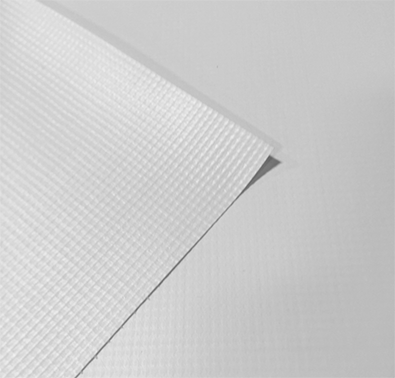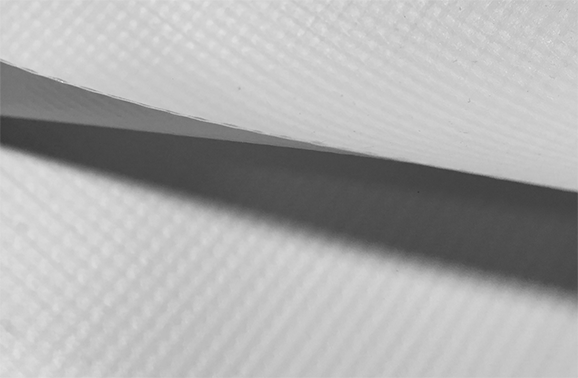A Good Vinyl Banner Depends On A High Denier Count
“Denier” is a term that may be unfamiliar to those outside of the printing industry but is important to understand when discussing vinyl banners. Denier is a unit of measurement that is used to determine the fiber thickness of individual threads or filaments used in the creation of textiles and fabrics. The polyester is measured by the weights of the thread (denier) and the density of the weave (threads per inch) or count. The higher the denier the stronger the material. The first denier count number is the amount of threads in the machine direction (warp) and the second number is the number of threads in the cross direction (fill). Fabrics and print medias with a high denier count tend to be thick, sturdy, and durable. By contrast, materials with a low denier count tend to be sheer, soft, and silky.
Vinyl banners are a weave of two materials—polyester mesh (scrim) and vinyl. The polyester mesh provides added strength. A high denier count for the mesh generally means a smoother scrim vinyl. Typically banner mesh is between 150 and 1,000 deniers, with a rule of thumb being the higher the denier count, the stronger and more durable the material is. At Printastic, we use only high quality vinyl banner material with 1,000 x 1,000 denier count. This high quality, matte finished front-lit white 13oz material enhances each vinyl banner we make for better image quality and greater tear and curl resistance.

Denier Rated For Indoor and Outdoor Banner Displays
Heavy duty, high denier count vinyl banners are perfect for outdoor use and provide a durable, environmentally friendly way to advertise a business or organization. It is the 1,000 denier count in the vinyl material used in creating vinyl banners that adds the strength needed in order for a banner to resist outdoor elements and common stress factors such as wind, rain, extreme cold and direct sunlight that, without a sufficient denier count, would cause an outdoor sign to weaken and become frail. Exposure to the elements poses more of a challenge for outdoor vinyl banners, which are probably the most used outdoor media. The high denier count is important to ensure a banner material that is strong enough for serious outdoor exposure. Unfortunately, there is a lot of cheap material on the market that ultimately will not last. As always, you will get what you pay for: cheaper vinyl and laminates will not last as long.
All Vinyl Is Not Created Equal
The vinyl material Printastic has selected is also features an integrated blockout layer which delivers 100% opacity to ensure that each banner is able to be easily read with maximum visibility. With inferior banner materials, direct sunlight or even ambient lighting behind the display can cause the message to appear washed out or difficult to read. However, the blockout layer within our vinyl banner material allows for printed images and graphics to maintain their vibrant visual appeal even under conditions where direct sun or other light sources are to the back of a banner sign. The smooth Matte finish we use has also been carefully selected to maintain the visual integrity of printed images the matte finish prevents the sun's glare from a visually obstruct the printed message by eliminating glossy reflections.

The attention paid to the finer details of the printing process - things like denier, material composition and finishing aspects of the vinyl we select - is actually much more important from a technical point of view than one might assume. We publish this information to better educate our customers on the details, materials and techniques that go into the construction of a good banner and to help our customers understand that Printastic takes the clarity, visual appeal and durability of all the signs we print very seriously.

